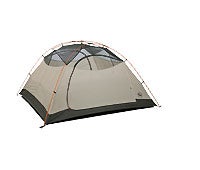European vs. American Tent Floors

'gg12_Big Agnes_Burn Ridge4_200x170'
Question:
Why are American tent floors less waterproof than European ones (they have about 10,000mm* of PU floor coating while all the ones I’ve seen here have 2,000-3,000mm)? Isn’t more better? Should I buy a European tent for maximum protection?
Submitted by – Lisa – British Columbia
Answer:
More isn’t always better, Lisa. To get some beta on this very good question, I talked to Bill Gamber, co-founder of Big Agnes. He says: “Euro tents have always been way, way over kill in terms of their PU floor coatings,” he says. “But the American backpacking market has proven that lighter coatings (and fabrics, like sil-nylon) are very waterproof, and the conservative Euro market is slowly changing.” As an example, Big Agnes uses fabric tent floor fabric with a rating of 1,500-3,000mm (depending on the type of tent and fabric). The difference in weight between a 1,500mm coating and a 10,000mm coating can be up to 2 1/2 pounds in a two-person tent.
Bottom line: If weight is not an issue for you, but long-, long-term durability is, it certainly can’t hurt to opt for a thicker floor coating. But as long as you take good care of your tent, you can certainly get away with American-style coatings without suffering any consequences.
*This number refers not to the actual thickness of the coating, but to a standardized water column test. For example, 1,500mm means that the fabric will withstand a 1,500mm (5′) column of water for more than one minute before a single drop might appear through the fabric. That’s strong enough to prevent rain from leaking in a 75-mph hurricane-force storm. In the outdoor industry, they use this number as shorthand to describe the amount of coating used to make the nylon or polyester tents waterproof.